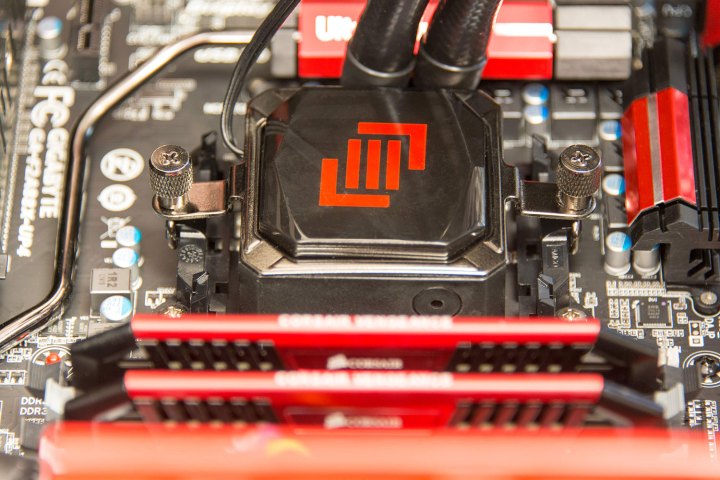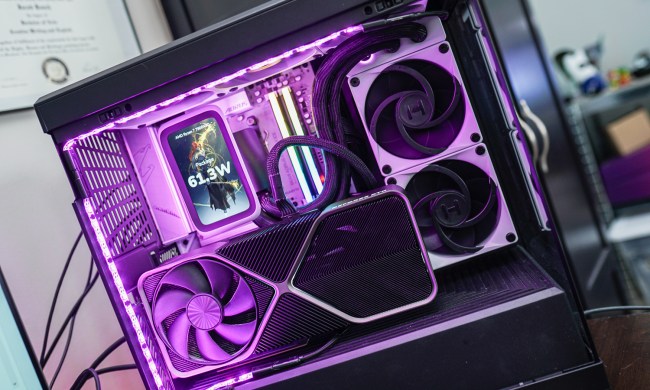It’s time for confession. Anyone who has built a few computers knows that the process often isn’t pretty, and small mistakes can have big consequences.
Over the years, I’ve gone through all of the common PC building mistakes you could think of — using cheap power supplies, applying too much (or too little) thermal paste, wiring everything up incorrectly, and much worse. Here, I want to cover the mistakes I made out of carelessness, not because I was a beginner, so hopefully you can avoid them.
Not fully mounting a CPU cooler

This is one of my most recent and embarrassing mistakes. I had just finished making an upgrade to my personal rig, including a new 240mm EK all-in-one liquid cooler. I mounted it, fans were spinning, and I booted into Windows like I didn’t have any problems.
The machine crashed within a couple of minutes, and on subsequent reboots, I saw temperatures nearing 100 degrees Celsius. I ripped everything out to find that the AIO block was mounted above my CPU — about half of an inch from making contact. I had run my computer without any active cooling on the CPU.
It turns out that the motherboard I was using, the Asus Tuf Z490-Plus, is designed so that the RAM slots are slightly closer to the CPU socket. My RAM modules were blocking my AIO from fully reaching the CPU, so even though I cranked down on the mounting screws, I wasn’t cranking against the processor.
I pulled off the cooler, saw a tiny dot of undisturbed thermal paste on my CPU, and swapped out the cooler with another one.
The takeaway
Intimately know your components. You won’t read about a slight change in RAM slot placement — which is done to reduce the distance between the memory and CPU — on a spec sheet. You have to know not just about any Z490 motherboard, but about the specific motherboard you’re using. The same is true for your other components.
The other takeaway is to check that your cooler is mounted correctly. Ensure it’s making contact, not just tightened down. I was lucky that the CPU didn’t fry after briefly running it without active cooling. It’s better to avoid that risk by checking if everything is copacetic visually.
Ripping a CPU out of its socket

I have a mini ITX PC that I move between my living room and bedroom. A few years ago, I was upgrading it to a Ryzen 7 1700X, and I used the stock cooler to keep everything as small as possible. A few weeks after the upgrade, I went to remount the cooler with new thermal paste to help with temperatures.
As I was unmounting the cooler, disaster struck. The cooler came off with the CPU still pasted to the bottom, complete with several bent pins. It was ruined. I had to go pick up an open box replacement at Micro Center to get my mini ITX build in order.
The takeaway
The thin layer of thermal paste you find on CPU coolers usually isn’t great. In the case of AMD’s stock coolers, the paste tends to be stickier than using your own thermal solution. That was the problem with my Ryzen 7 1700X.
I was too eager, and I applied too much pressure to get the cooler off. The solution is to be gentle until you’re certain that you’ve broken the bond between the cooler and the CPU. Gently switch off between rotating the cooler and rocking it back and forth, never applying enough pressure to full dislodge it. That gives you more control over breaking that bond so you don’t accidently rip your CPU out with your cooler.
Breaking a USB header

The USB 3.0 header is a chunky beast. I was moving a build from an NZXT H510 to a Be Quiet! Dark Base Pro 900, and everything was going smoothly. I finished the swap, but I quickly discovered that the front panel USB 3.0 ports weren’t working, despite the fact that I had the connector plugged in.
I pulled out the connector and found the problem — the USB 3.0 header on the motherboard was missing a pin that was lodged in the connector on the NZXT case. Unfortunately, there wasn’t a solution for this one. I went on without front panel USB 3.0 until I eventually upgraded the build.
The takeaway
Building a PC isn’t a delicate process. In a lot of cases, you have to apply pressure, crank down on screws, and stuff cables through routing channels. There are parts you should handle delicately, though.
Take the USB 3.0 header as a prime example. It’s a bulky header with a big connector, but it has exposed pins. That’s usually not an issue with other front panel connections, but the risk is still present. Whenever you’re dealing with exposed pins, take extra care not to bend or break them while building.
Not using an antistatic wrist strap

For this one, I’m confessing, not apologizing. I still don’t use an antistatic wrist strap. I never have. Static electricity poses a real threat to your components, but that threat isn’t relevant if you keep a few precautions in mind. Antistatic wrist straps work, and if you’re worried causing a short, you should use one. You just don’t need to.
The risk is that you’ll build up a static charge and transfer it to your components while handling them. If that charge is large enough and can travel to the right point, it can short your components. This is primarily an issue with motherboards, where you may need to touch exposed portions of the PCB.
The takeaway
The goal with an antistatic wrist strap is to ground you, which you can also do by touching any metal object with a path to the ground — including your PC case. Before that, there are a lot of things you can do to reduce the chance of building up a static charge:
- Don’t wear socks while building.
- Don’t build your PC on carpet or while standing on carpet.
- Don’t wear fuzzy pajamas, sweaters, or any clothes that are prone to building up static.
As long as you follow a few common sense practices to reduce building up static electricity, you can build a PC while only grounding yourself with the case. I’ve done it countless times, and I know dozens of others who do the same. To be clear, I’m not saying antistatic wrist straps don’t work. They do, and you should use one if you’re worried about shorting your components.



